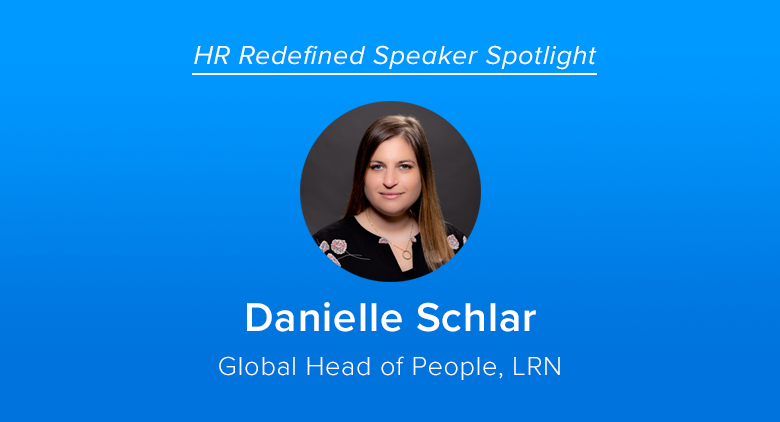
How to Get the Most From Employee Survey Data

Employee surveys are a powerful tool to help in employee engagement efforts. In fact, 95 percent of organizations defined as “engaged,” in a survey conducted by Quantum Workplace, use annual employee surveys, compared with 45 percent in disengaged organizations.
Conducting an employee engagement survey isn’t as simple as sending around a survey link to the organization and encouraging participation. The most challenging, and impactful, part of the employee engagement survey is ensuring that the data received is actionable.
Here’s how to take a strategic approach to get the most from your survey results, in partnership with the leadership and employees at your company.
1. Start with Key Numbers
Trying to make sense of all the data at once can be daunting. Begin with the data points that matter to your organization and its current objectives and vision. A good place to start digging into the data is employee participation, overall engagement scores, and manager/leadership scores.
While the number of employees who participated in the survey may seem like a minor data point, it is quite important. If only a handful of employees participated in the survey, it may mean that you need to review your survey program branding, culture of open communication, and outreach strategy. Do employees know why they are taking this survey and what happens with the data? Are they concerned about confidentiality? Or does it reflect a disengaged employee population? In addition, a small sample size may mean the results don’t accurately represent the broader employee population.
Once you look closely at participation, focus on the data points that are most important to your company—be it around employee development or areas of company culture that are lagging. Start with those metrics that have the potential to make the biggest impact for employees and the business.
Then look for metrics where there is clear dispersion: employees are either in agreement or really divided. For example, by glancing at the data, you may notice that an overwhelming number of employees are satisfied with compensation and benefits—a sign that your compensation program is well-received. But you also see that employees are split down the middle when it comes to their satisfaction with leadership—something you can add to your priority list for areas to improve in.
2. Look for Connections
Now that you’ve narrowed your focus to the most important data, it’s time to start looking for connections. Look at data points together to see if any are related and point to trends and deeper insights.
For example, you might look at employee satisfaction alongside tenure. You could find that the longer employees have been with the company, the more satisfied they are, or vice versa. Now your data has context, and you’re looking at trends to dive deeper into the feedback.
Another example is to link participation rates with tenure. If you find that newer employees were more likely to participate, that’s a sign your team is doing a great job of engaging fresh talent, but that you need to put more energy into sustaining that engagement in the long-term.
This process of connecting data to uncover trends can be made easier when all of your HR info is in one spot, on a human resources information system (HRIS). At Namely, we are able to easily pull the biographical and demographic information about our employees into a survey platform.
Being thoughtful about how you set up your engagement survey, including the level of anonymity and access of data, is important and will also inform what data you review.
3. Analyze Open-Ended Feedback
You’re starting to make sense of the numbers, and the open-ended responses from employees provide incredible color into the employee experience. Closely reading through many responses is time-consuming, and it can feel impossible to consider each one individually and apply the feedback.
This is where a lot of HR departments get stuck. You have paragraph after paragraph to go through—how do you pull out themes?
Instead of reading each open-ended question as a separate piece of data, consider them together using content analysis. Divide open-ended responses among team members, and read through them to identify overarching topics. Scan through them, looking for and highlighting key words. Then, sort them by positives and negatives.
Once responses are categorized as positive, negative, or neutral, look for themes in each group to sort them further and discover more detail. For example, under negative feedback, you might find that multiple employees mention learning and development, while others mention leadership. Group these themes together to create subcategories.
Now you can see how many employees feel positively or negatively, as well as their biggest shared concerns — which puts you in a position to take action.
Additionally, consider working with an engagement survey partner who does text analysis to help confirm your insights.
4. Share The Right Data with The Right People
You’ve made it through all the data and have some great actionable insights on employee engagement. The next step is sharing this information with the organization.
From the leadership, to managers, all the way down to employees, everyone should receive some information about the survey results and what’s going to be done with the feedback. Without visible results and a plan of action, employees may consider not participating during future surveys. Employees need to know their voice is being heard. A 2015 SHRM survey of more than 600 employees found that only 37 percent of respondents were very satisfied with the consideration their ideas received.
As you review the data, consider which results different employees throughout the organization would want to see. For example, management may be more interested in data and comments related to leadership, employee motivation, and frustrations so they can take steps to better lead and engage them. On the other hand, employees may be more interested in what their colleagues think about workplace issues. So share any large percentages and repeated themes on open-ended responses across the organization. Always be aware of the data integrity and treating confidential responses with appropriate care.
No matter what you decide to share with employees, do so in a way that’s easy to understand. And partner with leaders to deliver survey feedback. When leaders own their survey data and communication strategy, they may be more likely to own the action planning around the engagement survey.
And if you're using the survey results well, employees will naturally see improvements to things they pointed to in the survey. When employees see that their feedback had an impact, they’ll be much more likely to keep participating down the line.
5. Compare to Previous Results
You’ve analyzed all the data, but you’re not done just yet. There’s still one more set of results to review: those from previous surveys. Compare the current dataset with past surveys to see what has changed, what has improved, what continues to be an issue, and any new problems that have come up.
This is a great opportunity for HR to show just how impactful these employee engagement surveys are in driving effective strategy over time. Look at the biggest trends and issues from previous years and compare them with your current results to show that you listened to employee feedback and made changes that mattered.
While survey administration, data, and follow up can be overwhelming at first, engagement surveys and corresponding actions can yield valuable results. Ultimately, the efforts can help improve the experience for all employees.

See how Namely's flexible solution will help you streamline your HR processes by having your people, payroll, and benefits info all in on place.
Get a demoYou May Also Like
Get the latest news from Namely about HR, Payroll, and Benefits.
Thanks for subscribing!


Get the latest news from Namely about HR, Payroll, and Benefits.
Thanks for subscribing!



